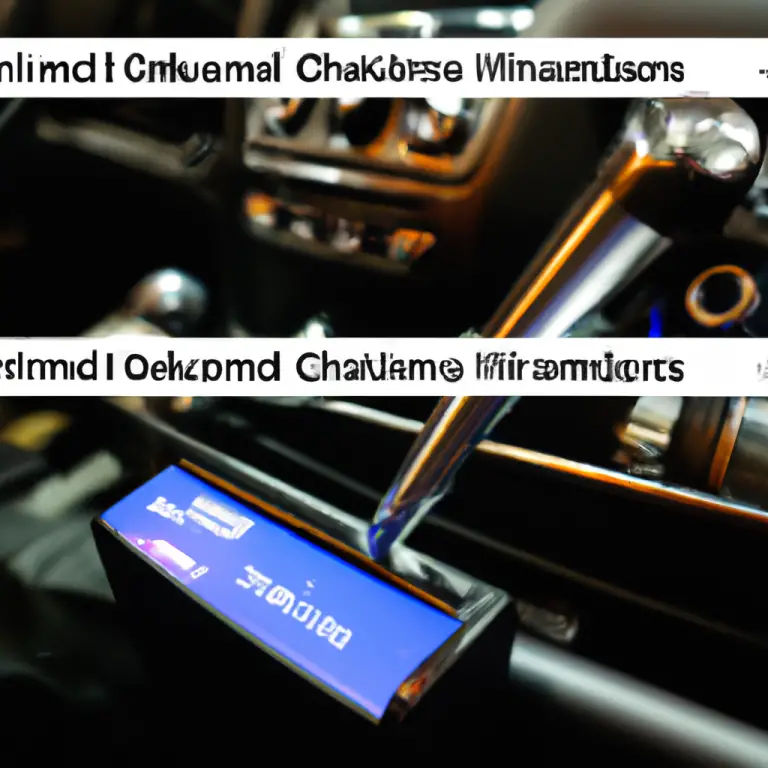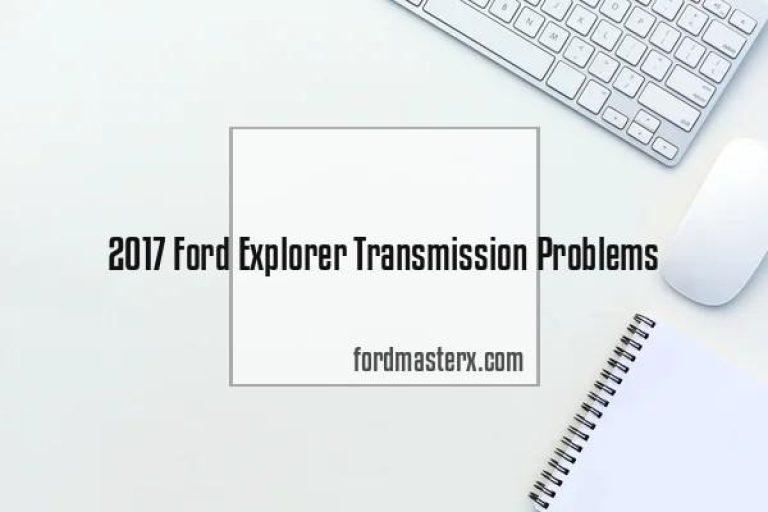How To Tell What Engine Is In My F150
Understanding the make of the engine in your Ford F150 can streamline maintenance and repair processes. In this comprehensive guide, the aim is to provide readers with expedient strategies for correctly identifying the engine model within their F150 vehicle, a popular model among Ford owners. Whether you’re a dedicated Ford enthusiast, a do-it-yourselfer, or a professional mechanic, these insights will prove invaluable in accurately determining the generated power within the heart of your vehicle. Armed with this precise information, readers will have a leg up in properly maintaining their Ford F150s, thus enhancing overall performance.

Understanding F150 Engine Variations
The F150, a legendary truck from Ford, is something of an icon in the automotive world. A vital part of any vehicle, and certainly in the robust F150, is the engine. But how well do we understand the different engine variations of the F150?
What is an F150 engine?
The heart of the F150, its engine, is a work of automotive brilliance. Designed for optimum performance, fuel efficiency and longevity, it provides the power and torque that has made the F150 a favorite among truck enthusiasts and everyday drivers alike. Over the years, Ford has offered a range of engine options for the F150 to cater to a wider audience, thereby ensuring that there’s a perfect F150 for everyone.
Different types of F150 engines over the years
As mentioned, the F150’s lineup of available engines has evolved considerably over the years. From the early options of straight six and V8 engines, Ford has expanded the F150 engine lineup to include everything from more efficient V6 engines to power-packed twin-turbocharged V6 options, and even the recent inclusion of a 3.0-liter Power Stroke diesel engine.
Comparison between different F150 engines
Each F150 engine variation presents its unique blend of power, fuel efficiency, and towing capacity. For instance, the 5.0-liter V8 offers significant pulling power and payload capacities, while EcoBoost engines deliver impressive fuel economy without compromising on performance. Whether it’s brute strength, diesel efficiency, or balanced output, finding the right F150 engine comes down to understanding your specific needs and expectations.
Locating the Vehicle Identification Number (VIN)
One of the essential tools in determining the kind of engine your F150 is equipped with is the Vehicle Identification Number (VIN). The VIN will provide information on the specific model, year, and engine type of your F150. Once you have this information, you can then research and explore different upgrades or modifications, such as an f150 ecoboost sound upgrade, that are compatible with your specific engine. This will ensure that any upgrades you make will be suitable for your vehicle and will enhance its performance and sound quality.
Finding the VIN on your F150
In most F150s, you can find the VIN on a small placard located on the driver’s side dashboard, visible through the windshield. It’s also usually on a label attached to the driver’s side door or doorjamb.
How the VIN relates to engine type
The VIN, a unique 17-digit code, is more than just an identification number. It houses a wealth of information about the vehicle, including details about the engine. Encoded within this alphanumeric string is information about the engine’s size, configuration, and even the type of fuel it uses.
VIN digits that indicate engine details
While the VIN may look like a random collection of characters, each digit (or group of digits) represents a specific piece of information. This includes data about the vehicle’s manufacturer, model, year of production, and more. For our purposes, the 8th digit is of particular interest as it often signifies the engine type.
Interpreting the VIN Code
Understanding the VIN is akin to decoding a language. Allow us to guide you through this task.
Meaning of every digit in VIN
As aforementioned, each digit or sequence within the VIN holds specific information about the vehicle. For example, the first character usually identifies the country where the vehicle was manufactured, while the second and third characters represent the manufacturer and vehicle type, respectively. The fourth through the eighth characters usually provide information about the model, body type, and engine.
Determining engine size and type from VIN
The 8th digit of the VIN is typically used to identify the engine type. Every manufacturer has a unique VIN system, however, in the case of Ford, the 8th digit can tell you if your F150 is equipped with a V6, V8, or a diesel engine, among others.
Common mistakes in interpreting VIN
It can be easy for an inexperienced eye to make errors while deciphering the VIN. Some common mistakes include confusing characters (like mistaking a ‘5’ for an ‘S’ or a ‘2’ for a ‘Z’), miscounting digits (reading the 10th digit as the 8th, for instance), or disregarding the significance of certain digits.

Using Engine Code Look-up Tools
While interpreting the VIN manually is crucial, there are also resources that can aid in the process.
Online resources for VIN interpretation
Various websites and online tools offer VIN decoding services where you simply input the VIN to receive a breakdown of the vehicle’s specifications, including details about the engine. These platforms generally provide easy-to-understand interpretations of the VIN code.
Apps that help in understanding engine details
There are also mobile apps that can scan and interpret your VIN. These apps can be a useful tool for quickly and easily obtaining engine information, especially when you’re on the go.
Benefits of using engine code look-up tools
Using VIN interpretation tools provides a quick and straightforward route to uncovering your engine’s details. They can save time, minimize errors, and help ensure that you get accurate information about your F150 engine.
Checking the Owner’s Manual
One overlooked resource for identifying your F150’s engine is the vehicle’s owner’s manual.
Finding engine details in Owner’s Manual
The owner’s manual typically contains a detailed breakdown of the vehicle’s features and specifications, including the engine. You can usually find this information in a section called “Specifications” or “Technical Data.”
Understanding technical jargon in Owner’s Manual
The manual may include technical jargon that can feel overwhelming. However, terms like “displacement,” “horsepower,” “torque,” and others are essential in describing the engine’s capacity and performance.
Losing Owner’s Manual? Here’s what to do
In case you’ve misplaced your manual, fear not, as many automakers, including Ford, provide digital versions online. So, you can still access all the necessary information you need about your F150 engine.
Consulting Ford’s Official Website
Ford’s official website can serve as a substantial resource for understanding your F150’s engine.
How to use Ford’s official website for engine details
Ford’s website typically has the specifications for each of its models, including the F150. You should be able to navigate to the F150 section and find engine details for different model years.
Information available on Ford’s website
Details such as engine displacement, horsepower, torque, and fuel economy among others, are readily available on Ford’s website. You can also find detailed descriptions and animations explaining the workings of different engine types.
How accurate is the information on Ford’s website
Given it’s the manufacturer’s official platform, the data provided on Ford’s website is usually accurate and up-to-date, making it a reliable source for F150 engine information.
Getting Information from the Emission Control Information Label
The Emission Control Information label can be another source of engine details.
Location of the Emission Control Information Label
This label is generally found under the hood of the F150, often either on the front radiator support, strut tower plate, or the underhood crossmember.
Details found on the Emission Control Information Label
The label usually provides details about the vehicle’s emission control system. However, it also typically contains the engine’s displacement and may also note other relevant engine data.
Interpreting the Emission Control label
While this label primarily concerns emissions information, understanding its content can also provide insights into your engine’s specifications. Pay particular attention to the numbers with a “L” beside them, which denotes the engine’s displacement or size.
Reaching Out to a Ford Dealership or Service Center
Sometimes, it may be best to seek expert assistance in identifying your F150’s engine.
How can Ford Dealership help?
A Ford dealership or service center can quickly and accurately determine your F150’s engine type and specifications using your VIN. Their comprehensive resources and experienced technicians can guarantee the correct information.
What to expect from a service center visit
When visiting a service center, you can expect professional service and accurate conclusions. The technicians will likely use special equipment and databases to provide you with the most precise details about your F150 engine.
Preparing for a service center visit
Before going to a service center, ensure you have your VIN handy. Also, be ready to explain any specific concerns or questions you have about your F150’s engine.
Accessing Information from the Underhood Emissions Sticker
Like the Emission Control Information Label, the Underhood Emissions Sticker can offer useful engine details.
Where to find the Underhood Emissions Sticker
This sticker is typically located under the hood of your F150. It’s usually on either the underside of the hood itself or on the radiator shroud.
Reading the Underhood Emissions Sticker
The Underhood Emissions Sticker often specifies the engine’s size, emission standards, and the vehicle models that the engine can be used with.
Significance of the Underhood Emissions Sticker
Reading this sticker can give you additional information regarding your F150’s emissions system and confirm the details you have already discovered about your engine.
Hiring A Professional Mechanic
In some cases, you might decide to hire a professional mechanic to determine your F150’s engine information. A professional mechanic can run diagnostic tests and thoroughly inspect your F150 to provide you with the most accurate engine information. They will be able to identify any issues or potential problems with your engine and recommend the best course of action to keep it running smoothly. With their expertise, you can be confident in knowing that you have the most dependable F150 engine for your vehicle.
When to hire a mechanic
If you’re still having trouble identifying the engine type or if you encounter issues that you’re not equipped to handle, it may be time to hire a professional mechanic.
What professional mechanics can uncover
A professional mechanic isn’t just equipped to identify your engine type; they can also provide a comprehensive inspection of your engine’s condition. They can check for potential issues, advise on necessary repairs or maintenance, and answer any questions you have about your F150’s overall health.
Costs involved in hiring a mechanic
While hiring a mechanic involves a cost, the expertise and knowledge they bring can be well worth it, especially when ensuring the optimal performance and longevity of your F150.
In conclusion, identifying the engine type of your F150 may require a little investigative work. However, armed with these strategies and resources, you’re well on your way to becoming fluent in the language of engines and ensuring the best care for your F150.



